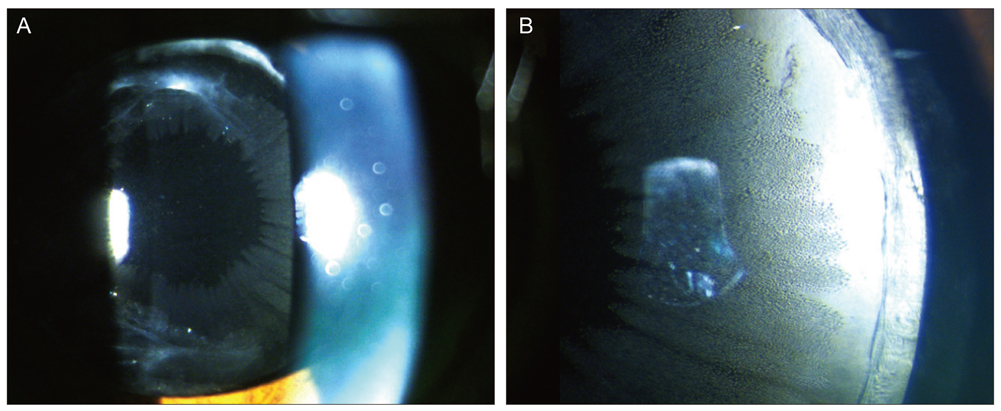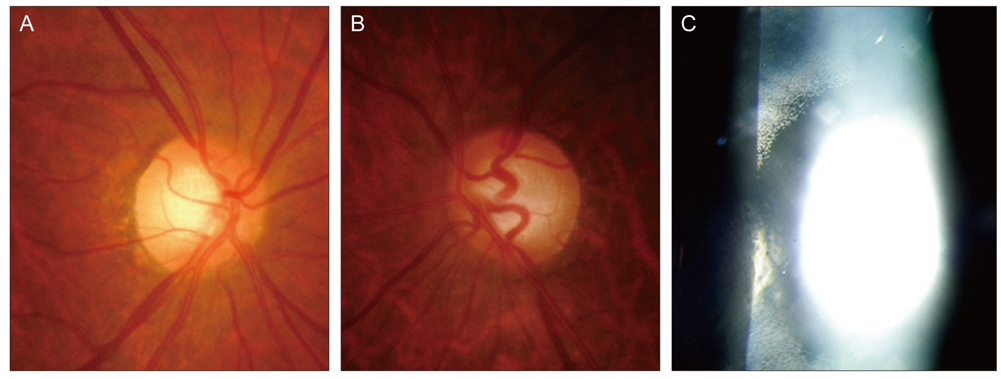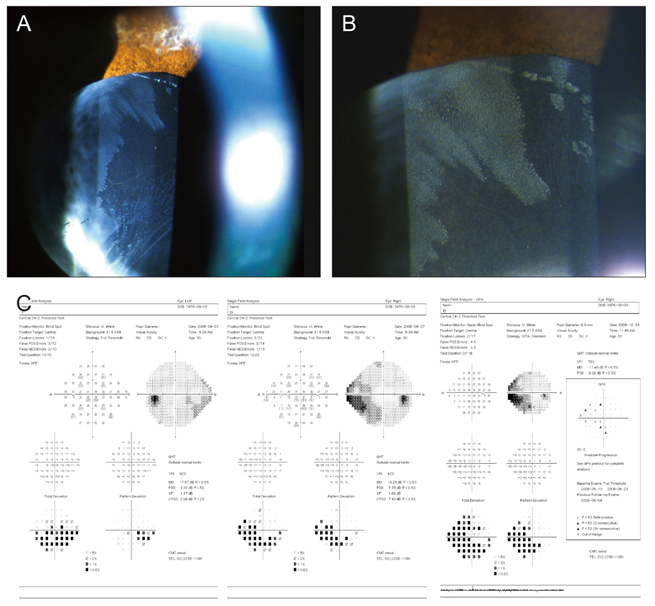Korean J Ophthalmol.
2012 Oct;26(5):402-405. 10.3341/kjo.2012.26.5.402.
Cases of Pseudophakic Pseudoexfoliation in Glaucoma Patients
- Affiliations
-
- 1Department of Ophthalmology and Visual Science, Seoul St. Mary's Hospital, The Catholic University of Korea College of Medicine, Seoul, Korea. mdahn@catholic.ac.kr
- KMID: 1397495
- DOI: http://doi.org/10.3341/kjo.2012.26.5.402
Abstract
- We present cases of primary open angle glaucoma patients without previous history of pseudoexfoliation who developed pseudoexfoliative materials on the anterior surface of the intraocular lens after cataract surgery. Among 5 unilateral pseudophakic pseudoexfoliation cases, 3 showed a more advanced state of glaucoma in the affected eye. The other 2 cases showed progression of glaucoma in the affected eye after the development of pseudophakic pseudoexfoliation, while the unaffected eyes remained stable. In the latter 2 cases, control of intraocular pressure was difficult, and more glaucoma medication was needed in the affected eye. Pseudophakic pseudoexfoliation in glaucoma patients with no history of pseudoexfoliation syndrome or pseudoexfoliative glaucoma has not been reported. In our cases, the eyes which developed pseudophakic pseudoexfoliation showed a more advanced state of glaucoma, more difficulty controlling intraocular pressure, and faster progression of glaucoma. More observation is needed, but we cautiously postulate that pseudophakic pseudoexfoliation may have a role as a clinical risk factor in the prediction of glaucoma progression.
MeSH Terms
Figure
Reference
-
1. Stewart JF, Jay JL. Pseudoexfoliation material on an acrylic lens. Br J Ophthalmol. 1995. 79:1050–1051.2. Bahadur GG, Masket S. Pseudophakia with pseudo-pseudoexfoliation. J Cataract Refract Surg. 2007. 33:1827–1828.3. Park KA, Kee C. Pseud oexfoliative material on the IOL surface and development of glaucoma after cataract surgery in patients with pseudoexfoliation syndrome. J Cataract Refract Surg. 2007. 33:1815–1818.4. Roberts MA, Hawksworth NR. Pseudophakic pseudoexfoliation of an AkreosFit intraocular lens. Eur J Ophthalmol. 2009. 19:1082–1083.
- Full Text Links
- Actions
-
Cited
- CITED
-
- Close
- Share
- Similar articles
-
- Association with Systemic and Ophthalmic Disease in Korean Pseudoexfoliation Syndrome Patients
- Pseudoexfoliation syndrome: case report and review of clinical features
- Comparison of Serum Homocysteine, Vitamin B12, Vitamin B6 and Folate Levels in Different Glaucoma Types
- Comparison of Anterior Segment Features between Groups with or without Glaucoma in Pseudoexfoliation Syndrome
- Central Corneal Thickness and Corneal Endothelial Cells in Pseudoexfoliation Syndrome




